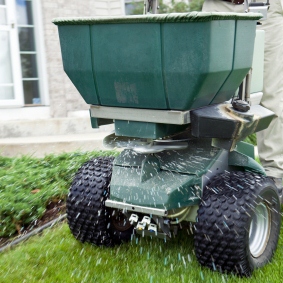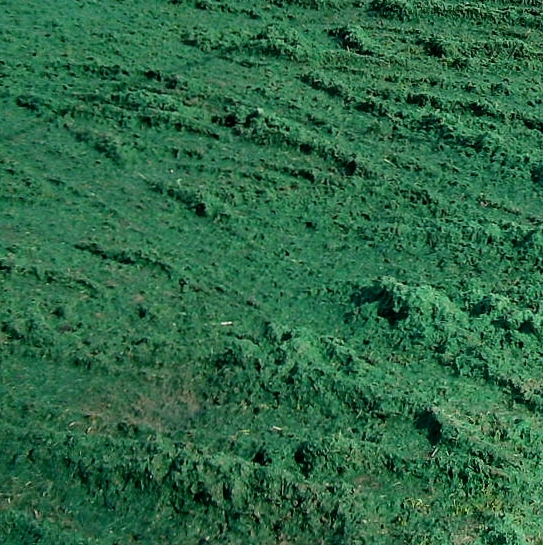Seed: Broadcast Seeding vs. Hydroseeding
Turfgrass seed can be applied in one of two ways, with a spreader or sprayer. Broadcast seeding utilizes a spreader to scatter seed over an area. Seed is then raked into the soil surface. Hydroseeding utilizes a tank and sprayer to apply a greenish-blue slurry of seed, mulch, and fertilizer over an area.

Broadcast Seeding Advantages: least expensive option; wide selection of turfgrass types available; minimal labor and time required; growth in difficult areas can be easier to establish; healthy root system develops during germination; and seed mixes are formulated for special requirements such as sun, shade, or both.
Broadcast Seeding Disadvantages: timing can be tricky and depends on your zone; rate of germination is slower; more water is needed to establish broadcast seed than hydroseed; seed can be blown away by wind, eaten by birds, and washed away by erosion; final result of the work may vary in quality; and lawn is unusable for a few weeks after seed has been spread.

Hydroseeding Advantages: less expensive than sod; can be accomplished in a short time; assists with erosion control; rate of germination is quicker; less water is necessary to establish hydroseed than either broadcast seed or sod; and healthy root system develops during germination.
Hydroseeding Disadvantages: timing can be tricky and depends on your zone; more expensive than broadcast seed; not a DIY option and requires a professional application; limited turfgrass types available; final result of the work may vary in quality; and lawn is unusable for a few weeks after seed has been applied.
Seed: Broadcast Seeding vs. Hydroseeding is an exert from What to Do about Ice Dams by Jeff Calcamuggio

Buildipedia Staff
The Buildipedia research and writing staff consists of dozens of experienced professionals from many sectors of the industry, including architects, designers, contractors, and engineers.
Website: buildipedia.com/